TYLER, Texas — Texas is home to more than 105 different species and subspecies of snakes. But, according to the Texas Parks and Wildlife Department, only 15 of those are potentially dangerous to humans.
Despite this, each year, there have been more deaths in Texas attributed to lightning strikes than to venomous snakebites. This is due, in part, to increasing awareness of snakes around us, developing and improved first aid and medical practices, and excellent educational and outreach efforts by herpetologists and snake enthusiasts across the state.
There is no single characteristic shared by all venomous snakes in Texas. Instead, you should learn to identify the species that live in your area. The following descriptions will help you learn some basic identification tips to help you recognize local venomous snakes.
VENOMOUS
Copperheads
Copperheads have chestnut or reddish-brown crossbands on a lighter colored body. These snakes are found in rocky areas and wooded bottomlands and are rare in dry areas. In the spring, they can be found along streams and rivers, as well as in weed-covered vacant lots.

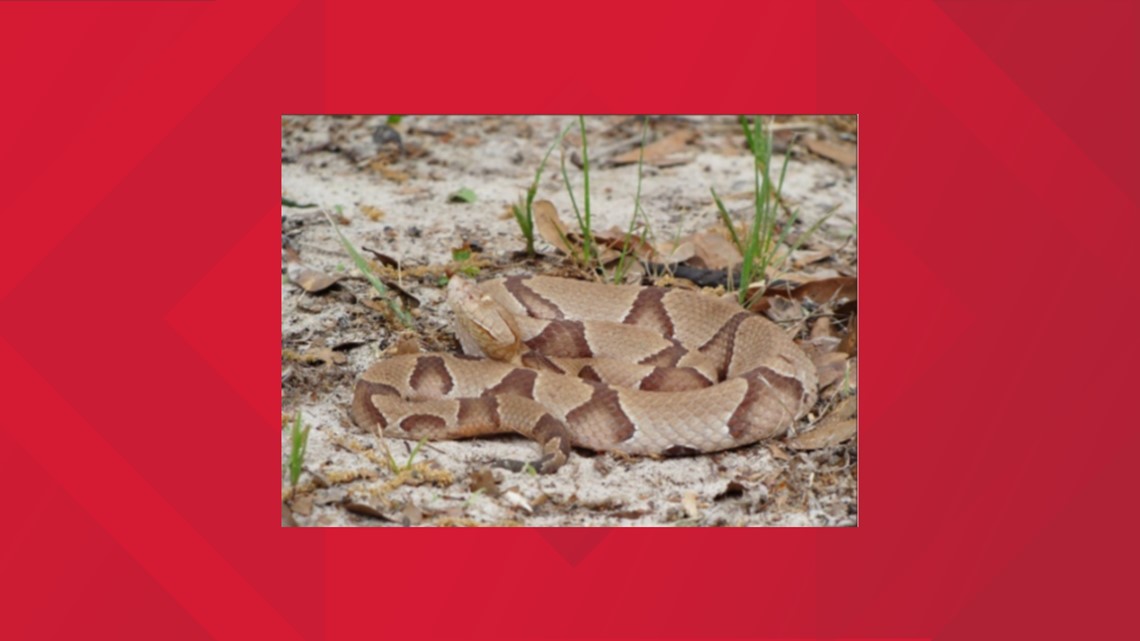
There are three subspecies of Copperheads in Texas; Southern copperhead (A.c. contortrix), 20"-30" long and found in the eastern one-third of the state; Broadbanded copperhead (A.c. laticinctus), about 2' long, widely scattered in central and western Texas; and the Trans-Pecos copperhead (A.c. pictigaster), 20"-30" in length and found near springs in the southern part of the Trans-Pecos.
Cottonmouths
The Latin name piscivorous means 'fish eating,' indicating its dietary characteristics. Also known as 'water moccasins', only one recognized subspecies is found in Texas; Western cottonmouth (A.p. leucostoma). Cottonmouths can be dark brown, olive-brown, olive green or almost solid black. They are marked with wide, dark bands, which are more distinct in some individuals than in others.

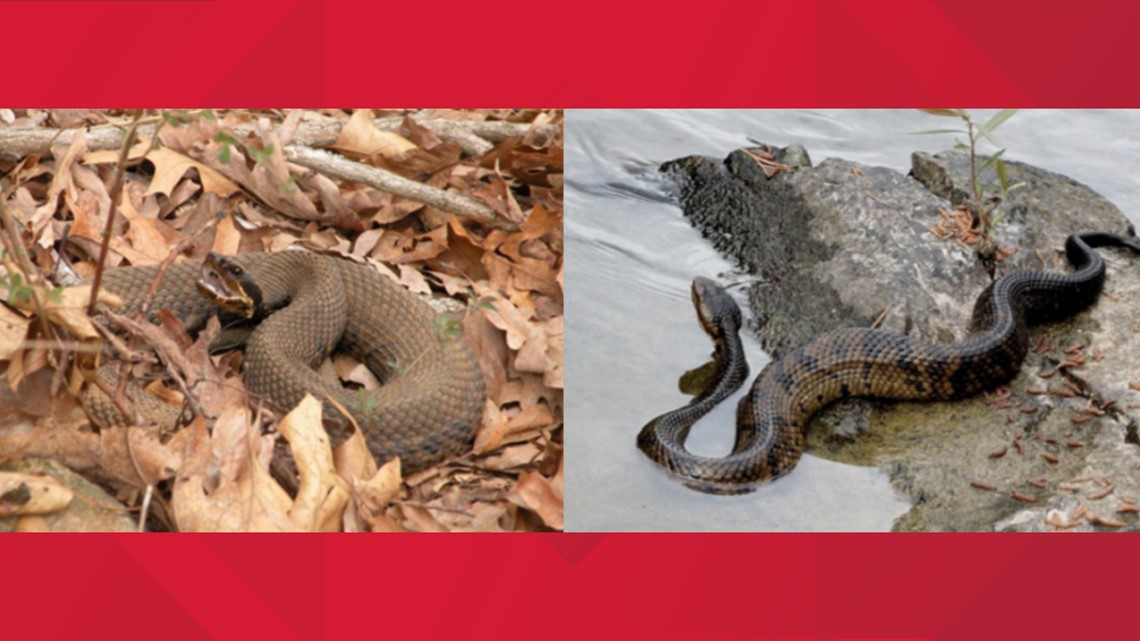
Juvenile snakes are more brilliantly marked. The cottonmouth gets its name from the white tissue inside its mouth, which it displays when threatened. This heavy-bodied snake, which averages about 3.5' in length, is found over the eastern half of the state in swamps and sluggish waterways, coastal marshes, rivers, ponds and streams.
Rattlesnakes
There are two groups of rattlesnakes: The more primitive forms belong to the genus Sistrurus. Texas has two.
The western massasauga is light gray with brown oval blotches along the middle of the back and smaller blotches along each side. They are 2' in length and found through the middle of the state in grasslands, marshy and swampy areas.
The desert massasauga is lighter in color than the western massasauga. It's smaller and more slender and found in the Trans-Pecos, western Panhandle and the lower Rio Grande Valley.

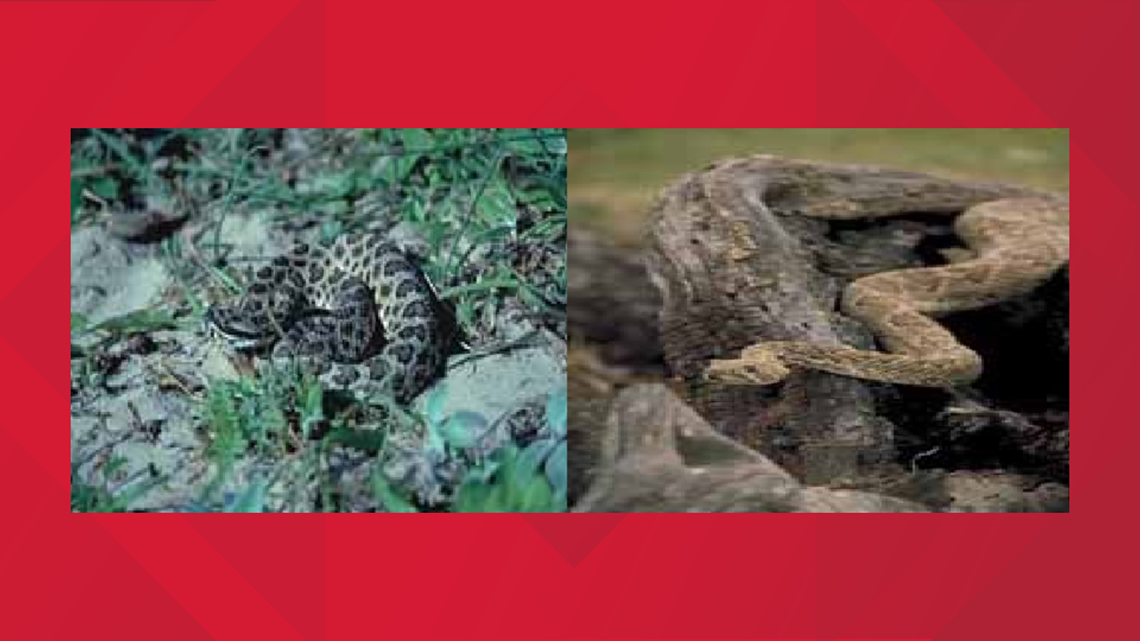
The more advanced forms of rattlesnakes belong to the genus Crotalus and Texas is home to six.
The western diamondback is brown with diamond-shaped markings along the middle of the back and alternating black and white rings on the tail. They averages 3.5'-4.5' in length, but can reach 7'. This is the most common and widespread venomous snake in Texas, found in all but the easternmost part of the state.
The timber rattlesnake, also known as Canebreak rattlesnake, is a large, heavy-bodied snake averaging 4.5'. They are brown or tan with wide, dark crossbands and the tail is entirely black. They are found in the eastern third of the state in wooded areas in wet bottomlands.
The mottled rock rattlesnake is light bream or pink with widely spaced, dark crossbands and mottled areas between the crossbands. They are small and slender with an average length of about 2' and found in the mountainous areas of West Texas.
The banded rock rattlesnake is similar to the mottled rock rattlesnake, but darker greenish-gray in color. They are found only in the extreme western tip of Texas.
The blacktail rattlesnake is gray to olive green with dark blotches along the back and a black tail. They average 3.5' in length and are found from Central Texas throughout most of West Texas in bushes and on rocky ledges.
The mojave rattlesnake is similar to the western diamondback in markings, but smaller and more slender and found only in extreme West Texas.
The prairie rattlesnake is a slender rattler that is greenish or grayish, with rounded blotches down the middle of its back. The average length is about 3' and is found in the grassy plains of the western third of the state
Coral Snakes
The brightly colored Texas coral snake is the state's only member of the Elapidae family, which includes the cobras of Asia and Africa. The coral snake is slender with a small indistinctive head and round pupils, and is usually is 2.5' or shorter.

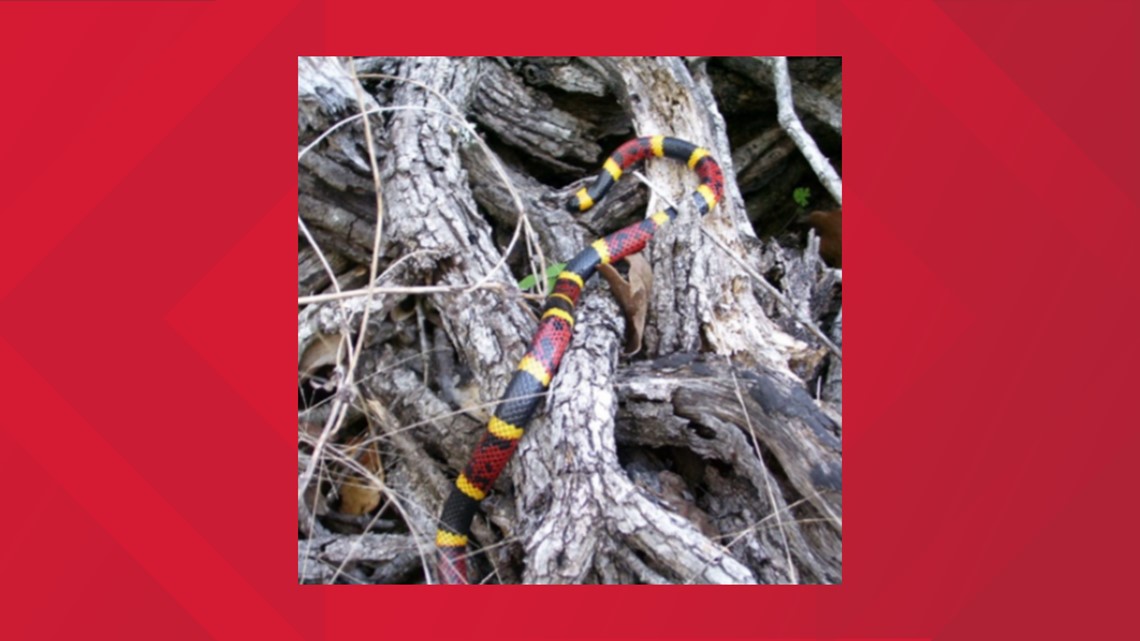
Its distinctive pattern is a broad black ring, a narrow yellow ring and a broad red ring, with the red rings always bordered by the yellow rings. Several harmless snakes are similarly marked, but never with the red and yellow touching. Coral snakes are found in the southeastern half of Texas in woodlands, canyons and coastal plains.
NON-VENOMOUS
Bull Snake
A bull snake may coil up like a rattlesnake, vibrate its tail, flare the sides of its head, and make a raspy hiss that sounds like a rattlesnake’s rattle. They can be aggressive and may strike and bite, but do not have any venom. Distinguishing a bull snake from a rattlesnake is easier when the snake is not coiled.


Bull snakes have more slender bodies than rattlesnakes and have rectangular, instead of triangular, heads. Regardless of the snake’s posture, look at the tail for identification: instead of a dark or black-and-white banded tail tipped with rattles, bull snakes have pointed, yellow-tan tails with reddish bands and no rattles. Bull snakes are sometimes called gopher snakes. They are found throughout west Texas.
Hog-Nosed Snake
Like bull snakes, a hog-nosed snake will mimic a rattlesnake by coiling its body and flaring the sides of its head. Hog-nosed snakes do not have venom glands, nor do they have rattles.

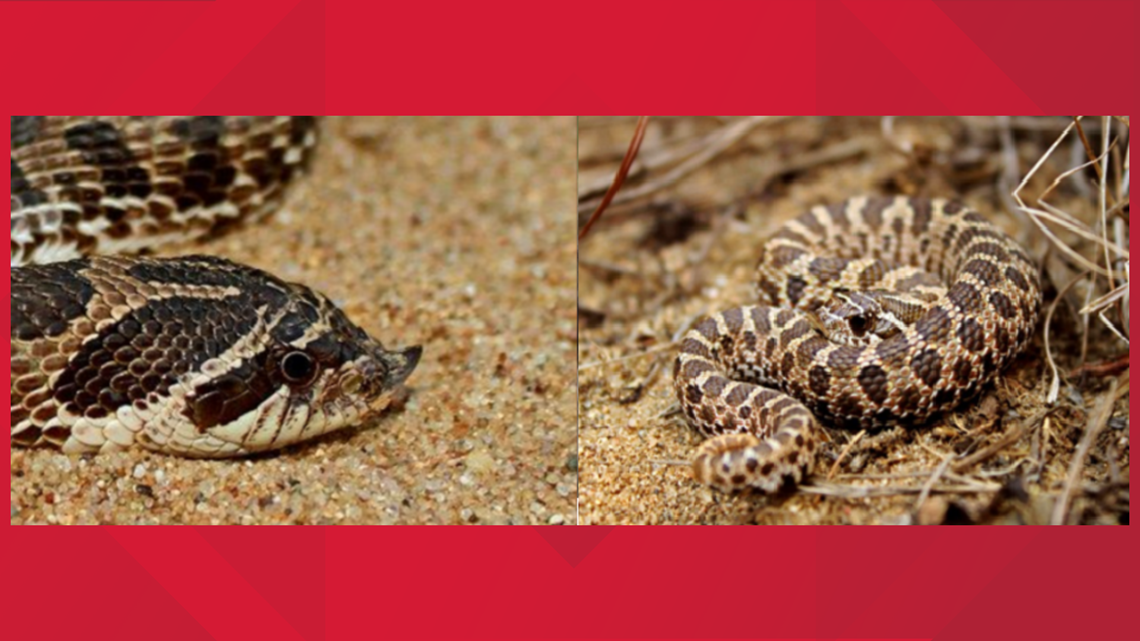
Look for the upturned scale at the end of a hog-nosed snake’s nose, which is a feature rattlesnakes lack. When especially stressed, hog-nosed snakes will play dead by flipping upside down, sometimes vomiting or defecating to add to the effect. The range of hog-nosed snakes covers most of Texas
Water Snake
As their name suggests, water snakes spend much of their time in and around water, similar to the behavior of cottonmouths. A few species of water snakes also resemble cottonmouths. Diamond-backed water snakes (Nerodia rhombifer) have dark patterns on a tan or brown background, and some subspecies of plain-bellied water snakes have brown bodies with or without noticeable bands.

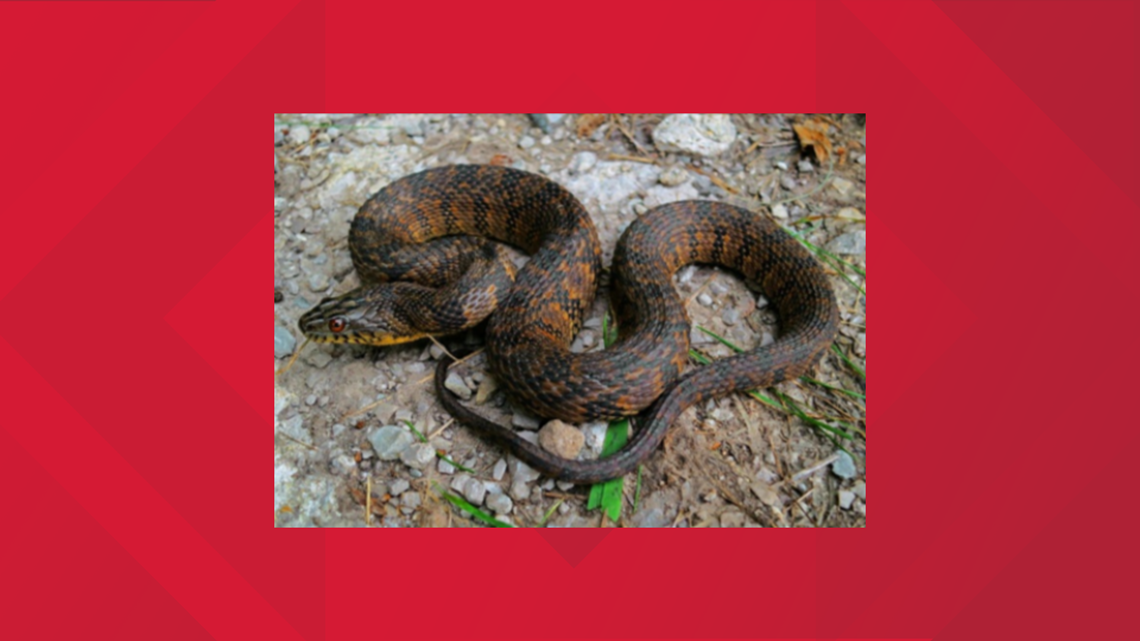
Banded and unbanded plain-bellied water snakes may resemble cottonmouths, which can have patterning or be patternless. As their name implies, though, plain-bellied water snakes lack patterning on their undersides, which may be pale to bright yellow.
For all water snakes, a good distinguishing feature is the dark vertical lines that span the lower jaw.
Water snakes can flatten their heads when threatened, but their necks are not easily distinguished from their bodies in that posture. In contrast, cottonmouths have a wide head but narrow neck. If the snake is observed in the water, note that a cottonmouth will usually hold its head high and most of its body will be above the surface of the water. On the other hand, most of the body of a water snake will usually be just below the surface of the water. Although water snakes are not venomous, they can deliver a strong, painful bite. Water snakes occur in suitable habitat throughout most of Texas.
Texas Indigo Snake (Protected Species)
All species designated as Threatened or Endangered, whether federally or state listed, may not be harmed. The Texas indigo snake is one of 10 such protected snake species.
As their name indicates, Texas indigo snakes are a shiny dark blue in color, with silver-brown mottling or bands on the front half of the body. They are large snakes, with an average length of 5'-6' and thick, heavy bodies.

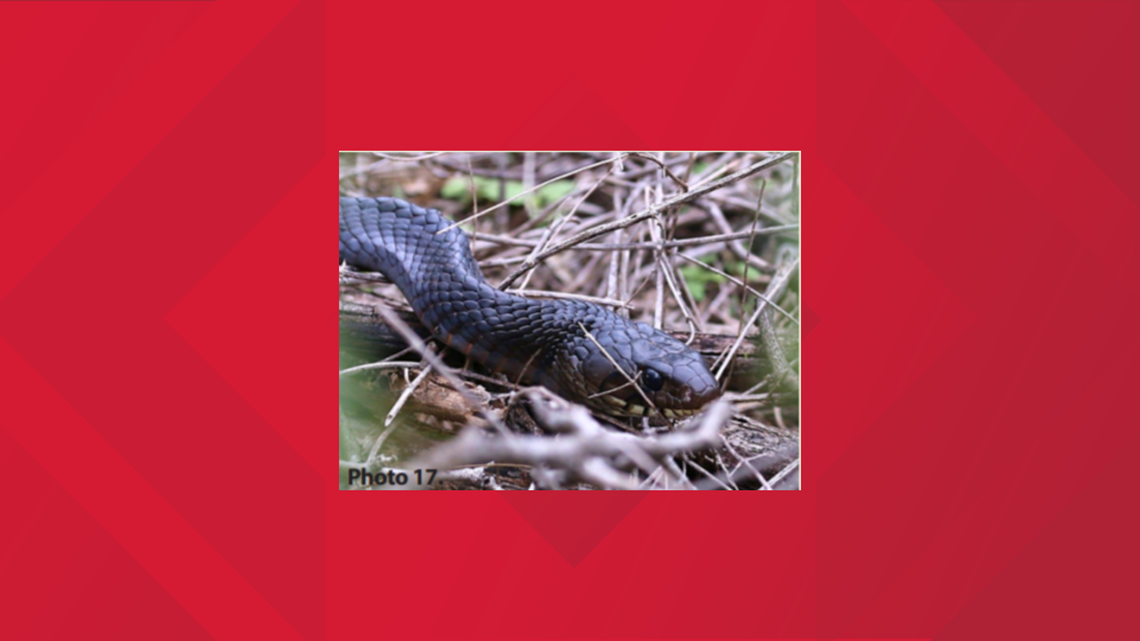
The largest individuals may reach lengths over 8 feet. Although they will sometimes make a rattling hiss when threatened, Texas indigo snakes are typically not aggressive and their coloration does not resemble any venomous snakes found in the state.
While the prey of indigo snakes includes typical snake food like rodents, they will also consume rattlesnakes. Texas indigo snakes are found in south Texas, in brushy habitat near a watersource
Scarlet and Milk Snakes
The range of scarlet snakes in Texas is fairly small compared to that of coral snakes, limited to a few counties in the northeast and along the south Gulf Coast. Milk snakes (Lampropeltis triangulum) have a similar range to coral snakes. Scarlet and milk snakes look similar, with bold red, black, and pale bands that might be confused with the striking pattern of a coral snake.

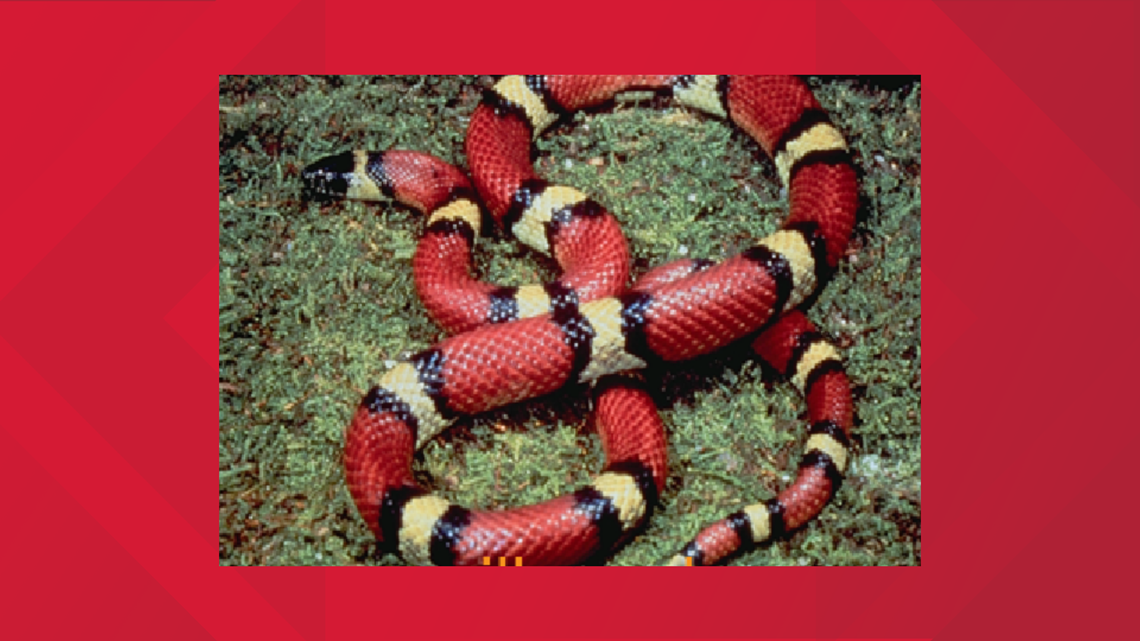
However, the red bands on both of these non-venomous species touch the black bands. Often, the pale bands are white, cream, or pale yellow, instead of the bright yellow of a coral snake. On scarlet snakes, the red and black bands do not continue all the way around the snake, and the white of the belly is visible.
SAFETY AROUND THE HOME
As our population continues to grow, and people continue to move into 'pristine' and 'untouched' areas, encounters with venomous snakes are going to occur. Many of these encounters occur around the home, with the result that incidents of bites close to home are statistically high.
Snakes in general, occur around a home for the specific purposes of seeking food and shelter. Keeping these things in mind provides us with guidelines to help prevent snakebite around the home.
Keep wood piles, brush piles, trash dumps and livestock pens as far as possible from the residence. When working in these areas, exercise caution. Never put an arm or leg into something if you can not see the bottom.
Keep storage areas and livestock sheds/barns as neat as possible. Treat tools and materials stored on the floor as possible snake shelters. Treat overturned boats, tarps and similar objects as potential shelter for transient snakes moving through the area.
Remember snakes are adept at finding their way through small openings. Keep this in mind when entering crawl spaces, basements, garages and similar areas.
SAFETY IN THE FIELD
Since venomous snakes are common in the rural areas of Texas, it is important for ranchers, hunters, rural residents, outdoor enthusiasts and other that frequent these areas to exercise caution.
Be careful where you put your hands and feet - don't reach or step until you can see the bottom.
Never step over a log without first seeing what is on the other side. If you must move a log - use a long stick or garden tool first, to ensure snakes are neither under, on or around these favored habitats.
Use a flashlight when moving about, even in your home yard, at night.
Animal burrows make excellent habitat for snakes - don't reach in without first checking.
Wear protective clothing if working in areas where you suspect snakes nearby. Heavy footwear, snake proof trousers and/or leggings will help reduce your risk.
Freeze still when snakes are known to be nearby until you know where they are. Allow the snake to retreat. If you must move, back slowly and carefully away from the snake.
FIRST AID
First Aid for snake bites can prevent disability, disfigurement or death if it is applied effectively. The recommendations have changed drastically over the years, and remaining informed on effective first aid should be a priority of everyone working in snake habitat.
Assume envenomation has occurred even before symptoms appear.
Identify the species of venomous snake with care.
This could help with the medical treatment but do not endanger yourself and become another victim:
- Keep the victim as calm as possible. Keep yourself calm as well.
- Know and treat for any symptoms of shock.
- Wash the bite area with a disinfectant soap.
- Remove restrictive clothing or jewelry in the area of the bite.
- Prevent movement of the bitten extremity.
- Get medical attention as soon as possible.
- Under no circumstances should you cut between the punctures, or suck the venom out or apply electric shock.

